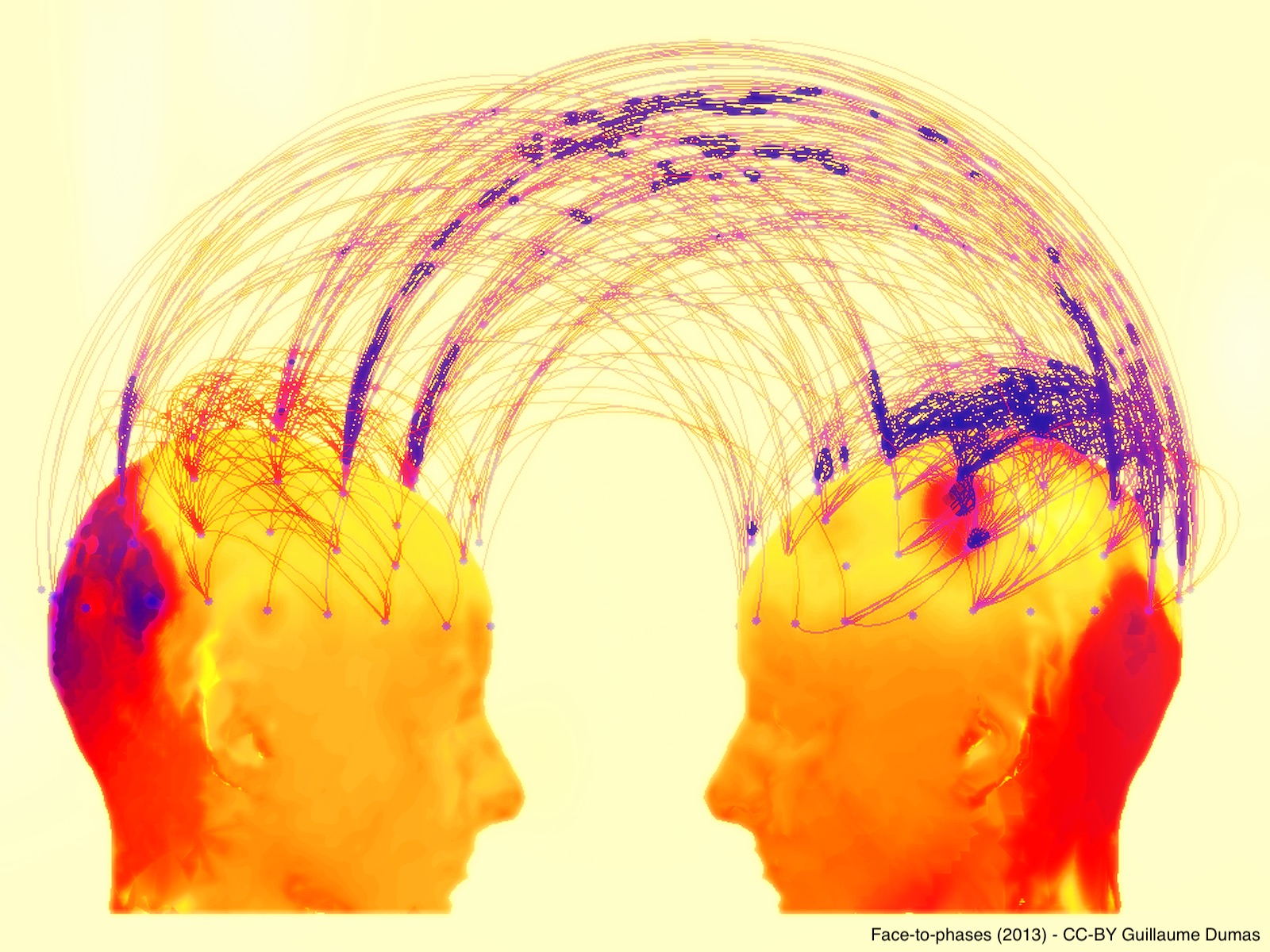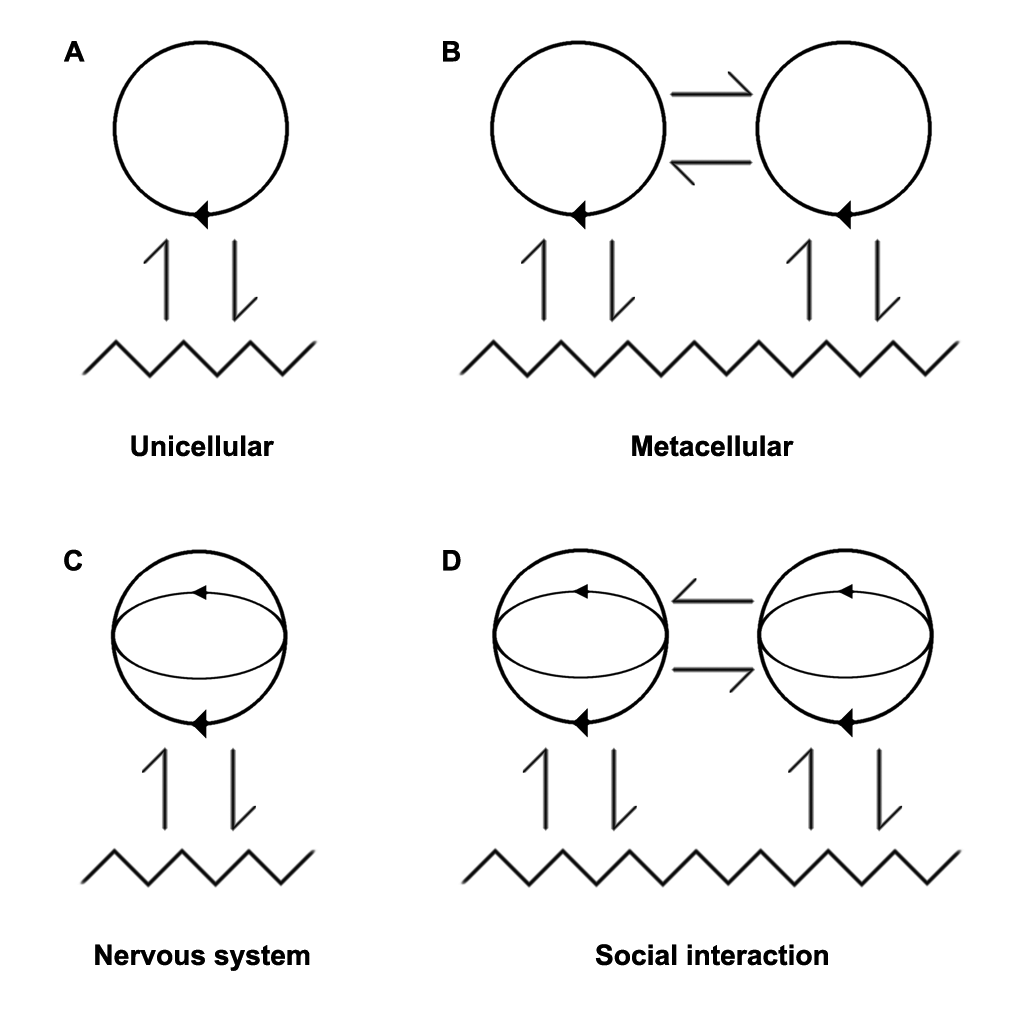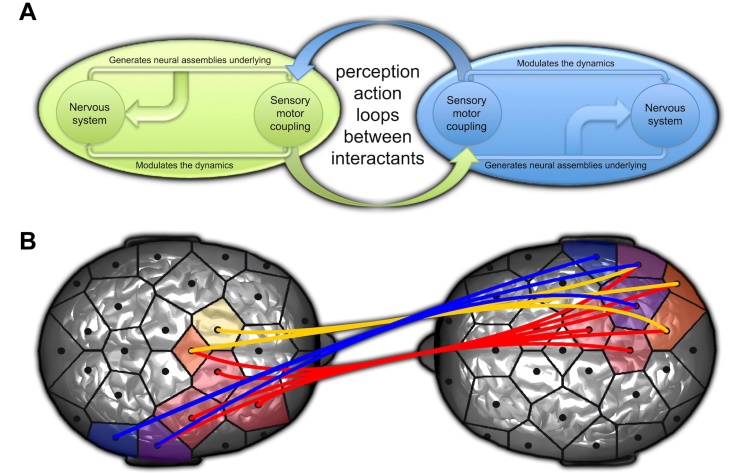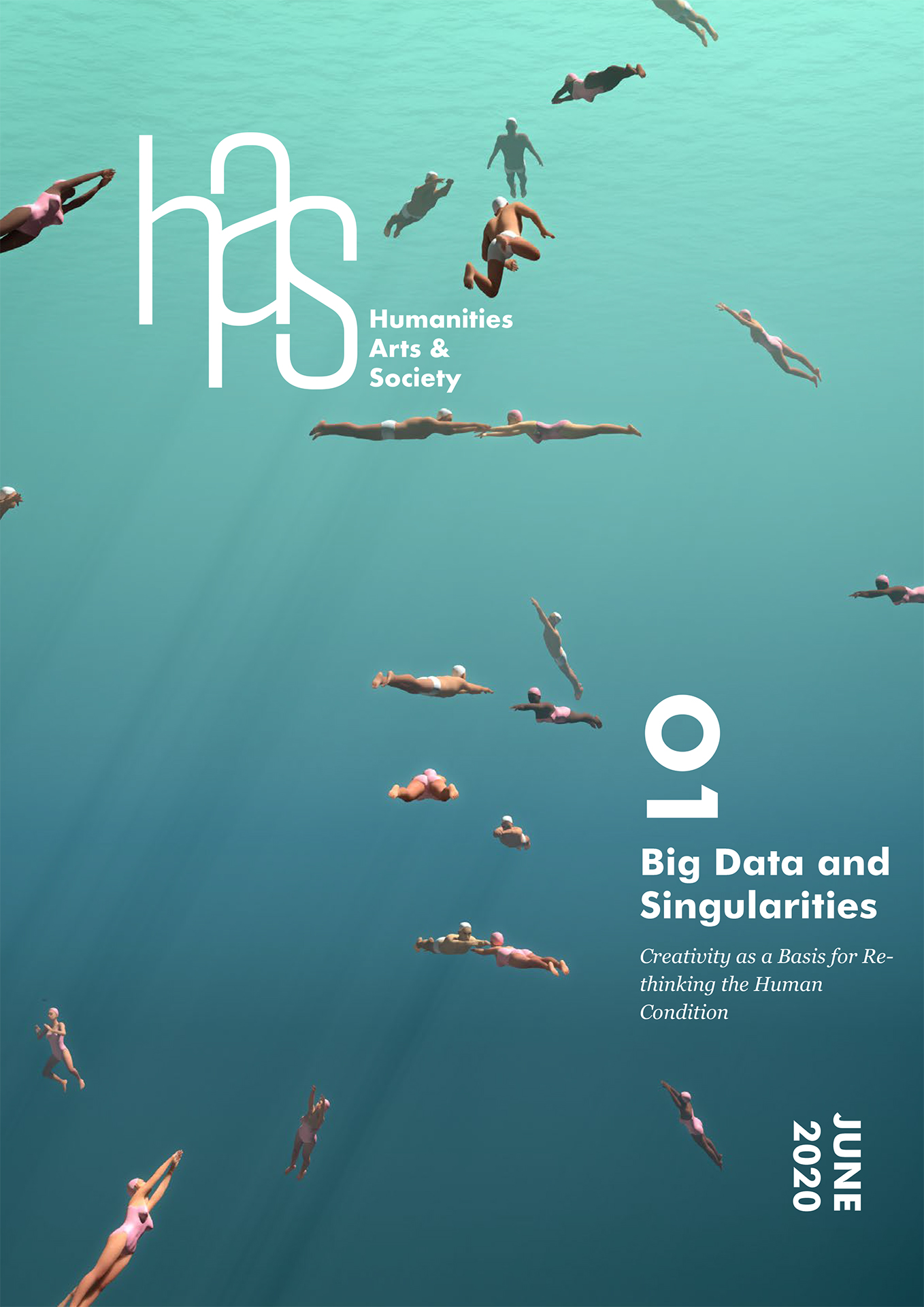
“The bee dreams up the flower and the flower dreams up the bee.”
F. Huxley
“Bee and flower are together, such that if you take one out, both disappear.” F. Varela
At the crossroads of the biological sciences and computer science, the brain/ computer metaphor that has prevailed for more than fifty years in neuroscience has led to the consideration of isolated individuals without taking into account their social interactions. The neuro-imaging technique called hyperscanning now allows us to record the behaviour and brain activity of multiple participants simultaneously and thus, finally, study social interaction in a spontaneous, reciprocal context. Human interaction is then apprehended in a holistic way, by considering two individuals as a single system, and observing behaviour as well as brain activities. These methodological and theoretical developments have demonstrated that interacting with others is fundamentally different from passive social perception. These results therefore invite us to consider more broadly interactional dimensions in neuroscience work, as well as the complementarity between the dynamics of our social interactions and our biological grounding.
From Cybernetics to Self-Organization — Which Paradigm to Approach the Complexity of Human Cognition?
The nature of human cognition is a complex question, one that has received different answers in different disciplines, and that has mobilized contradictory and often fragmented theories—much like the elephant in the ancient Jainist parable illustrating the relative reality of individual perception, as described in the philosophical system Anekāntavāda.1 An elephant arrives in a village of the blind, and when its occupants try to guess what it is, very different hypotheses are proposed. The blind man touching the foot thinks it is a tree, while the one holding the tail thinks it is a rope, and so on. No single blind man is able to figure out what the elephant is on his own—only by pooling their different experiences will the blind men be able to recognize it. Human cognition is the elephant of the cognitive sciences, and the blind men are well represented by the various disciplines— philosophy, psychology, neuroscience, but also linguistics, computer science, anthropology, and literary theory—that have tried, in isolation and in vain, to understand how our psyche works.
The emergence of modern cybernetics at the beginning of the 20th century reflected a desire to establish a new field of research into modes of communication by combining the knowledge of several disciplines, while giving a central place to the notion of “control.” It was not until the Macy Lectures in New York in the 1940s2, which brought together mathematicians, philosophers, anthropologists, psychologists, and economists, that research on cognition took a new direction at the international level. These conferences, and the many theoretical debates on the nature of the mind, led to a new momentum, in resonance with the developments of a new discipline—computer science—whose promise of potential applications contrib- uted to the craze for the metaphor of the “computer brain.”
However, this metaphor, also known as “computationalism,” is not accepted by the entire scientific community. Beyond the efficiency of algorithms, cyberneticians and their successors insist on the importance of self-organizing processes in the emergence of cognition. Nevertheless, the computer model does not take into account all of the properties of brain functioning. Indeed, these properties had initially been set aside to conceptualize the computer. Ironically, the latest work of the fathers of computer science, Alan Turing and John Von Neumann, underlines this problem by considering the self-organized aspects of cerebral functioning, which are totally absent in the computer.
Among the thinkers of the second cybernetic wave, Humberto Maturana and Francisco Varela, in complementarity with the work of cognitivists, have gone into greater depth with respect to certain phenomena, in particular the processes by which the brain reconstructs the reality of the world—e.g., remembering the beauty of an exhibition, the order in which paintings were seen, etc. The two Chilean biologists approach these phenomena by taking the side of a strong biological anchoring. Before considering cognition more specifically, they attempt to conceptualize life from a new angle. At a time— the 1970s—when molecular biology was booming, and the cell was increasingly appearing as a complex miniature machine for biologists, the two neurobiologists focused their reflections on two central and complementary aspects of life—autonomy and coupling with the environment.
Maturana and Varela thus developed the theory of autopoiesis—”auto” meaning “self” and “poiesis” “to produce” in Greek (Maturana and Varela, 1994). The cell is considered to be the basic unit of life, insomuch as the conditions necessary for the establishment of an autonomous structure, yet one coupled with the environment, are already present at this elementary level of organization. This structural coupling—known as “first-order” coupling—is the combination of a causal network closed in on itself that maintains the cell’s self-organization or reproduction. This theoretical framework helps to conceive how stabilizing the structural coupling with the environment provides the condi- tions necessary for the establishment of coupling between the cells themselves during evolution (Figure 1). This transition from unicellular to multicellular entities corresponds to the Cambrian explosion,3 541 million years ago. This landmark event in the history of life on Earth saw the first eukaryotes (i.e., cells with a nucleus surrounded by a membrane), protozoa (“proto” meaning “first” and “zone” being “animal” in Greek) become metazoans, whose cells can specialize in different functions for the benefit of the whole organism. This specialization allows the appearance of much more complex biological systems with levels of organization that allow the development of processes other than nutritional autonomy. Thus, we see the immune system appearing, which ensures the defense of organisms against diseases, but above all the nervous system, which allows us to perceive the environment and to better act upon it in return.
Structural coupling then becomes “second-order” because this loop with the environment no longer only maintains the organism’s material autonomy, but also its informational autonomy. Varela will later develop the theory of enaction, fo- cusing specifically on these aspects,4 with a focus no longer on the evolution/structure of the living but on cognition. As he had been able to do by proposing the theory of autopoiesis, Varela distanced himself from his contemporaries by refusing to use the metaphor of the computer brain, and by playing with the idea of autonomy and coupling.
Since stabilization during the evolution of cell/environment coupling provides the necessary conditions for coupling between the cells themselves, stabilization of the informational interaction between organ- isms and their environment has allowed these organisms to interact with each other (Figure 1). This “third-order” structural coupling is nothing more than social interaction, the precondition for the emergence of culture.
Understanding Social Interaction: A New Challenge for Neuroscience
As paradoxical as it may seem, work in social neuroscience has long focused on isolated brains, which has led some researchers to use another metaphor, considering social interaction as the “dark matter”5 of social neuroscience (Schilbach et al., 2013). It was not until the 2000s that neuroscientists took social interaction seriously and studied the functioning of not just one but two brains in synergy (Hari and Kujala, 2009).
Two challenges therefore had to be met. On the theoretical level, experimental protocols had to be invented to question this interactional dimension, and on the technical level, tools had to be built to record brain activity during reciprocal exchanges in real time. Until then, the study of the brain had been oriented towards social perception, based on research focusing on the perception of social stimuli, and these investigations did not take into account the reciprocity and co-regulation of exchanges. For example, participants had to detect an emotion from images of faces or imitate scenes presented in a video. But obviously, because the image of a face or a video remain insensitive to the behaviour of the spectator, information in this case is unidirectional and not bidirectional, as in social interactions.
How can we close this loop in which the self and the other influence each other? Three main approaches have been developed: studying several humans “in vivo” simultaneously, simulating “in silico” (i.e. in a computer) interactions with mathematical models and, combining both of these approaches, observing the interaction between humans and mathematical models.
Brains on the Same Wavelength, or Exploring Synchrony
Studying several interacting human par- ticipants had already been done in psychology, for example in child development research that highlighted the fundamental role of the co-regulation of exchanges between a baby and his or her parents (Fogel, 1993). However, to apply this approach to neuroscience, it had to be combined with recordings of the brain activity of the interacting participants.
This is the aim of the method called “hyperscanning,” introduced in 2002 with Functional Magnetic Resonance Imaging (fMRI; Montague et al., 2002), then extended to electroencephalography (EEG) in 2006 (Babiloni et al., 2006).6 These first studies demonstrated the feasibility of simultaneous recordings, and the first results confirmed that our brains tend to react in a similar way in social contexts when they share the same information. However, the first hyperscanning recordings could not reveal the third-order structural coupling—i.e., the fact that the brains of the interacting participants synchronize, according to a common external stimulus (e.g., music they dance to or a movie they watch simultaneously).

It is by combining spontaneous imitation (a developmental psychology task in which two people freely imitate each other) with hyperscanning EEG recordings that we have been able to approach this third-order coupling. When participants interact spontaneously, they enter into interactional synchrony, i.e., their behaviours are co-dependent in time to the extent that their movements start and end at the same time, even if these movements are not morphologically identical. By isolating these moments of interactional synchrony during spontaneous imitations of hand movements, we have been able to demonstrate that they are accompanied by brain wave synchronizations between the brains of the participants (Dumas et al., 2010; Figure 2).
In addition to being consistent with the terms “being in phase” or “being on the same wavelength,” these results also showed that the human brain reacts to real-time social interaction in a different way than it does to social perception. For example, brain reward circuits are more activated during spontaneous two-way interaction, such as dialogue, and less when we are passively watching a monologue. Highlighting these variations thus questions the generalization of previous results in the field of social neuroscience, based solely on a unidirectional approach to social perception. The results also highlight the importance of context and the role played in social interaction (e.g., imitator or model) in modulating the brain’s response (Nadel and Dumas, 2014). These new approaches may have applications to how to design more interactive learning and to approach the performing arts.
The Two Faces of Social Interaction
Thus, we have seen how the approach to human cognition can be renewed. Moving beyond the metaphor of the computer brain, human thought can be seen as an interface between the biological embedding in the body (especially the brain) and social dynamics (Dumas, 2011). A double constraint operates between these two faces: The social brain enables informational coupling with other brains, and social interactions shape our brain connections (Clark and Dumas, 2016). As in the myth of the blind men and the elephant, it therefore seems that the different disciplines of cognitive science must co-construct meaning across disciplinary boundaries and levels of observation (Dumas, Laroche, Lehmann, 2014). Social interaction appears as a subtle mix between the interplay of our inter-individual dynamics and intra-individual biological grounding.

- A philosophical system of Indian origin, developed before our era, which considers that all reality is relative and that there are multiple points of view.
- Conferences organized in New York from 1942 to 1953 on the initiative of neurologist Warren McCulloch. They are named after the financial support by the Macy Foundation.
- A period of several tens of millions of years—also known as the “zoological big bang”—during which a great diversification of animal, plant, and bacterial species can be observed.
- Enaction is the way living things organize themselves in interaction with the environment.
- Metaphor referring to a physical substance, also called «dark matter,» which would be made up of particles that have never been detected in the laboratory but which, nevertheless, would represent a substantial mass of the universe according to certain astrophysical observations.
- For the anecdote, experiments were carried out in the 1960s with the EEG, but in the field of parapsychology.
REFERENCES
Maturana, Humberto R., Francisco J. Varela, & François-Charles Jullien. L’arbre de la connaissance. Ed. Addison-Wesley France, 1994.
Schilbach, L., Timmermans, B., Reddy, V., Costall, A., Bente, G., Schlicht, T., & Vogeley, K. (2013). Toward a second-person neuroscience 1. Behavioral and brain sciences, 36(4), 393-414.
Hari, R., & Kujala, M.V. (2009). Brain basis of human social interaction: from concepts to brain imaging. Physiological reviews, 89(2), 453-479.
Montague, P.R., Berns, G.S., Cohen, J.D., McClure, S.M., Pagnoni, G., Dhamala, M., Wiest, M.C., Karpov, I., King, R.D., Apple, N., & Fisher, R.E. (2002). Hyperscanning: simultaneous fMRI during linked social interactions. Neuroimage, 16(4), 1159- 1164.
Babiloni, F., Cincotti, F., Mattia, D., Mattiocco, M., Fallani, F. D. V., Tocci, A., Bianchi, L., Marciani, M.G., & Astolfi, L. (2006). Hypermethods for EEG hyperscanning. In Engineering in Medicine and Biology Society, 2006. EMBS’06. 28th Annual International Conference of the IEEE, 3666-3669.
Dumas, G., Nadel, J., Soussignan, R., Martinerie, J., & Garnero, L. (2010). Inter- brain synchronization during social interaction. PloS one, 5(8), e12166.
Nadel, J., & Dumas, G. (2014). The interacting body: intra-and interindividual processes during imitation. Cogn. Educ. Psychol, 13, 163-175.
Dumas, G. (2011). Towards a two-body neuroscience. Communicative & integrative biology, 4(3), 349-352.
Clark, I., & Dumas, G. (2016). The regulation of task performance: a trans- disciplinary review. Frontiers in psychology, 6, 1862.
Dumas, G., Laroche, J., & Lehmann, A. (2014). Your body, my body, our coupling moves our bodies. Frontiers in human neuroscience, 8, 1004.
Guillaume Dumas is a Research fellow of the Human Genetics and Cognitive Functions Laboratory at the Institut Pasteur and affiliate member of the Human Brain and Behavior Laboratory at the Center for Complex Systems and Brain Sciences of Florida Atlantic University, as well as founder and scientific coordinator of SoNeTAA platform at the Child & Adolescent Psychiatry department of the Robert-Debré Hospital in Paris.
Guillaume Dumas is a Research fellow of the Human Genetics and Cognitive Functions Laboratory at the Institut Pasteur and affiliate member of the Human Brain and Behavior Laboratory at the Center for Complex Systems and Brain Sciences of Florida Atlantic University, as well as founder and scientific coordinator of SoNeTAA platform at the Child & Adolescent Psychiatry department of the Robert-Debré Hospital in Paris.
